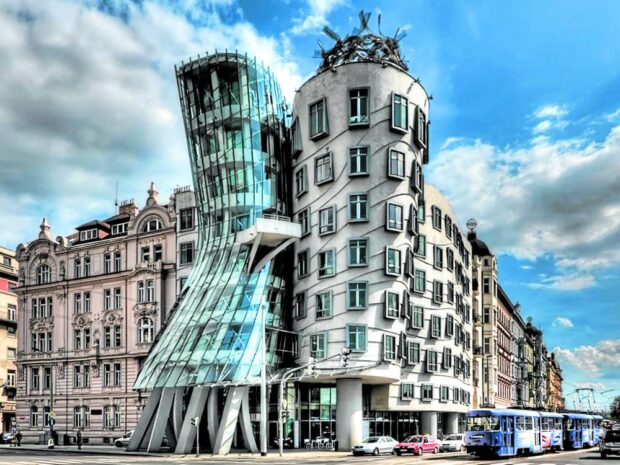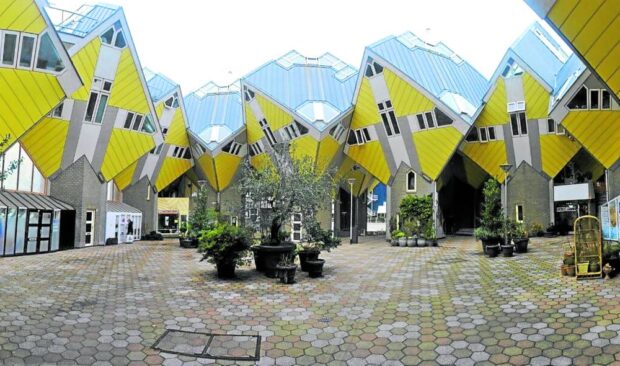How important is it for buildings and land development to be in vogue? How fast should the built environment be allowed to transform to keep up with design trends?
We label the material entities of our world as dated or obsolete when they remain as they are over a period of time. The rate of obsolescence has become higher in recent times with the faster turnout of new technology in our midst and with the ease of flow of design concepts on the global stage.
ARCHITECTURE AND FORM
Buildings and landscapes as visual treats are inherent to design products meant to capture the users’ interest. Art principles have always governed indoor and outdoor space production since the dawn of time.
Marcus Vitruvius Pollio’s firmitas (strength), utilitas (function), venustas (beauty) credo still holds as the basis of good architecture. Over the course of human history, we have seen how people go the extra mile to accessorize and decorate beyond the minimum functional requirements of spaces to fulfill other needs.
From projecting social status to expressing beliefs and simply feeling good, aesthetic elements have been part and parcel of the designed spaces that we move around in.
BUILDING AND FASHION PARADOXES
In accounting terms, buildings are referred to as capital or fixed assets, the value of which is discounted over a long period of time.
In business terms, real estate properties are high-worth investments that hold value for many years. These concepts run counter to the notion of fast fashion that is relatively more accessible and more affordable but wanes in value as trends change within short time periods.
Architecture history runs parallel to world history which is discussed with reference to periods, ages, and eras. These time scales span generations or hundreds of years and are defined by distinct styles that permeate various art forms such as painting, music, and fashion.
THE NEED TO KEEP UP
The pressure to keep up with design trends through renovation or remodeling is driven by social and economic goals.
From an investor developer’s point of view, the objective is to make products appealing to the market given the prevalent socially-constructed marketability criteria. From an owner’s perspective, the objectives could be personal satisfaction, social acceptance, or appreciation of value, among others.
Keeping up requires adeptness in accessing information, sensing changing preferences, and seeing patterns in the movement of dynamic elements in the social field. Realizing reimagined spaces also entails cost and could eat up a substantial portion of one’s savings. This cost is on top of the mandatory repair and maintenance work to keep the spaces functioning.
RESULTANT URBAN FORM
Changing design trends and varying abilities and desire to keep up result in a mix of styles that constitute community and urban architecture. The cumulative product has public consequences as it becomes part of the public realm.
Diversity accounts for vibrance and character which make places interesting. In some cases, the juxtaposition of different styles results in incoherent and difficult-to-navigate urban settings. With the market- and private-initiative-led changes in the built form of a city come physical and social issues that call for urban governance through a reasonable amount of regulation.
DESIGN CHOICES
As with the clothes and accessories we wear, we can go for the trendy or for the classic when investing in real estate.
Timeless designs are based on classical elements and principles of composition. Aesthetic principles of balance, symmetry, rhythm, hierarchy, and color may be referenced for distinguishing designs that will stand the test of time. Others may opt for the so-called out-of-the-box designs, radical forms enabled by new materials and technology, and innovative concepts based on new lifestyles.
Either way, the value of real estate may be preserved or upgraded with the passing of time through conscious management.
FAST FASHION ISSUES
Going the trendy way in real estate investments can lead to the same pitfalls of fast fashion.
Waste generated with frequent remodeling has consequent environmental problems that need to be addressed through recycling strategies. The use of internationally accepted but unsustainable materials also adversely impacts the users and the urban environment. Picking up foreign building design elements that do not respond to the local context can make for non-functional and difficult-to-maintain spaces.
WAYS FORWARD
Designers are challenged these days to balance many concerns as new realities affecting the design process emerge.
Transformable architecture and flexible spaces are translations of the need to adapt to fast-moving variables that define our present world. Buyers and end-users are also called upon to make informed choices when investing in houses, business spaces, and other real estate developments.
Taking a critical stance when presented the popular choices is important as builders and buyers co-define our long-term futures.
The author is a Professor at the University of the Philippines College of Architecture, an architect and environmental planner



